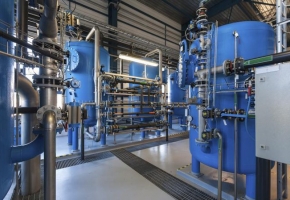Evaluating battery chemistries for grid-level storage

With lithium-ion the most popular choice for grid-scale energy storage at present, a new ranking claims to have identified a more appropriate technology. Image: NGEN
Researchers in China have ranked some of the most commonly used battery chemistries according to parameters deemed important for grid-level storage.
The group examined lead-acid, lithium-ion, zinc-air, nickel/metal-hydrogen and sodium-sulfur batteries to assess their properties in terms of round-trip efficiency, specific energy and capacity, operating voltage, cycling life, self-discharge performance, cost, environmental impact and safety.
Leading the pack were zinc-air batteries. Such devices also scored highly on cost, safety and eco-friendliness.
Lithium-ion batteries came second in the grid-scale storage ranking.
Traditional lead-acid batteries, meanwhile, have a range of promising properties the team identified in terms of cycling durability and energy efficiency.
Source: pv-magazine.com







